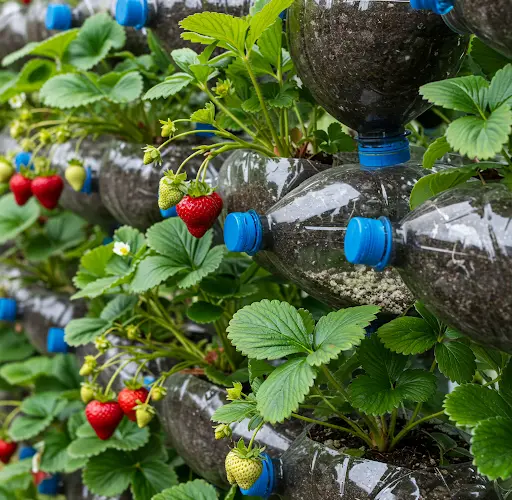For year-round indoor cultivation, opt for day-neutral or everbearing strawberry varieties. These types produce fruit continuously, independent of day length, making them ideal for indoor gardening. Popular choices include ‘Albion’ and ‘Seascape’ .
Selecting Containers and Soil
Strawberries thrive in containers that are at least 8 inches deep and 12 inches wide, with adequate drainage holes to prevent waterlogging. Use a high-quality, well-draining potting mix enriched with organic matter. Avoid using garden soil, as it may compact and hinder root development .
Providing Adequate Light
Strawberries require a minimum of 6–8 hours of direct sunlight daily. If natural light is insufficient, supplement with full-spectrum LED grow lights for 12–16 hours per day to promote flowering and fruiting
Maintaining Optimal Temperature and Humidity
Maintain daytime temperatures between 68°F and 75°F (20°C to 24°C) and slightly cooler temperatures at night. Ensure moderate humidity levels to prevent diseases such as powdery mildew. Good air circulation around the plants is essential for healthy growth .
Watering and Fertilizing
Keep the soil consistently moist but not waterlogged. Water the plants when the top inch of soil feels dry, preferably in the morning to allow foliage to dry during the day. Use filtered or non-chlorinated water to avoid harming the plants. Fertilize with a balanced liquid fertilizer every 3–4 weeks to support continuous growth and fruit production
Pollination Techniques
In indoor settings, natural pollinators are absent, so manual pollination is necessary. Gently transfer pollen between flowers using a small brush or cotton swab to encourage fruit development .
Pruning and Managing Runners
Regularly remove dead leaves and any runners to direct the plant’s energy toward fruit production. This practice helps maintain plant health and maximizes yield
Harvesting and Replanting
Harvest strawberries when they are fully red and ripe, leaving the cap and a short stem attached. Over time, strawberry plants may decrease in productivity. Consider replacing them every 2–3 years to maintain consistent yields
By following these guidelines, you can successfully grow strawberries at home, providing your family with fresh fruit all year round.



